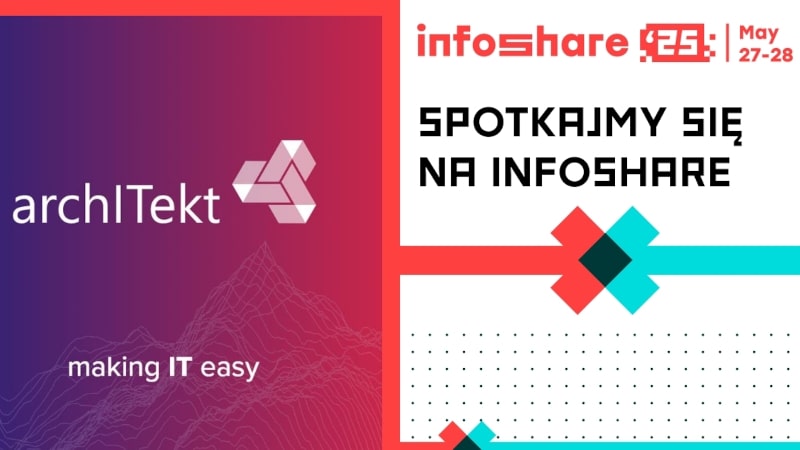If you have an idea for an application or system and aim for a swift market entry to gather user feedback promptly, it is worth considering constructing a Minimum Viable Product (MVP) using a Low-Code platform. In this post, we will delve into five reasons why leveraging this innovative methodology in the application development process is advantageous.
What is MVP?
MVP, or Minimum Viable Product, is defined as an application containing the minimum set of features necessary to initiate a business or cater to end-users. Restricting the number of application features is aimed at abbreviating the time required for its launch, often leading to significant cost reductions in deploying the initial application version.
Building software demands increasing flexibility and speed. Consequently, many companies opt to construct a Minimum Viable Product (MVP) using low-code platforms.
Why Develop MVP with Low Code?
1. Time and Cost Efficiency
Utilizing a low-code platform enables the efficient and rapid creation of prototypes and subsequent application versions. With an MVP, the time between iterations can be shortened, crucial for adapting to changing market conditions. Ready-to-use mechanisms in application development, such as event logging, change history, object permissions, and multilingual support, facilitate faster and more efficient prototype creation. Additionally, the platform comes with pre-built procedures and automatic deployment and update mechanisms for the solution on target environments, simplifying deployment/installation.
2. Agile and Business Idea Adjustments
Short timeframes for delivering product iterations allow the effective implementation of Agile methodology. During the production process, especially in the prototype and MVP creation stages, there is an opportunity to adjust business ideas based on user feedback and current market trends. MVP enables users to interact with the application early, facilitating quick receipt of feedback, suggestions, and necessary improvements. Early engagement of target users allows adapting the product to real needs, crucial for market success. Low-code platforms, like VSoft archITekt, enable rapid prototyping and application development. With a visual approach to application development, developers can immediately see the results of their work, test application fragments, and make corrections according to current needs.
3. Involvement of the Business Team
Low-code platforms allow active participation of non-programmers from the business team. With intuitive tools and a visual approach to application development, members of the business team can actively collaborate in building the MVP. This not only promotes a better understanding of business requirements but also enables faster decision-making, as the development process becomes more accessible to those outside the programming world. As a result, the entire team can fully engage in the application development from the beginning, leading to more integrated and efficient operations.
4. Security by Default
Unlike traditional manually coded applications, where developers must independently ensure the implementation of security measures, low-code platforms like archITekt provide built-in solutions to enhance the security of the end application. This guarantees that the solution is resilient to potential threats, especially in the context of customer data protection. By using low-code platforms, many potential security vulnerabilities that could arise in traditional programming are avoided. Additionally, the VSoft archITekt platform undergoes regular security audits, making application security an integral part of the development process.
5. Out-of-the-Box Scalability
The archITekt platform is designed to handle both small and enterprise-level solutions, capable of scaling with the growing needs of the target system. The solution can be installed on a single server and then scaled to operate on a cluster – this happens at the deployment stage, and no changes are required in the application itself. This is crucial because an MVP, as the foundation, should flexibly evolve as the product develops.
MVP and Low Code: Who Benefits the Most?
Startups and Entrepreneurs
For startups, rapid market entry and obtaining user feedback are essential. Low-code platforms enable the rapid creation of MVPs, supporting the dynamic development of new business ideas.
Small and Medium-sized Enterprises (SMEs)
Companies with limited financial and technical resources can use low code to minimize costs and shorten the time to market, crucial in a competitive business environment.
IT Departments in Large Corporations
For IT departments in large corporations, low code can be an effective tool for rapidly prototyping, testing new solutions, and collaborating with the business team without the need for prolonged programming processes.
Business Team Members
Thanks to low-code tools, non-programmers, such as managers, business analysts, or marketing specialists, can actively participate in the MVP creation process. This enables a better understanding of business requirements and shortens the path to achieving the intended goal.
Why archITekt?
Because we create MVPs for our clients using a consistent application design pattern, ensuring consistency in developed solutions.
For example: when creating different lists on the archITekt platform, each of them typically has sorting functions and pagination, automatically provided by the platform.
Furthermore, repeatability is observed not only from a technical perspective but also from a business and user experience (UX) standpoint. Each similar functionality is built in the same way, eliminating issues known in applications where different programmers create solutions “in their way,” leading to chaos when different parts of the system operate differently in terms of UX. In our case, the platform enforces a standardized implementation approach, contributing to consistency and a better understanding of the system.
Moreover, the elements of the archITekt platform used to build applications are optimized for performance, ensuring that the final application simply operates quickly, without “sluggishness.”
Conclusion
Building an MVP on a low-code platform is the key to quickly, efficiently, and flexibly introducing innovative applications to the market. With this approach, companies can shorten the time needed to deliver valuable products, and investors can profit faster from their investments.




